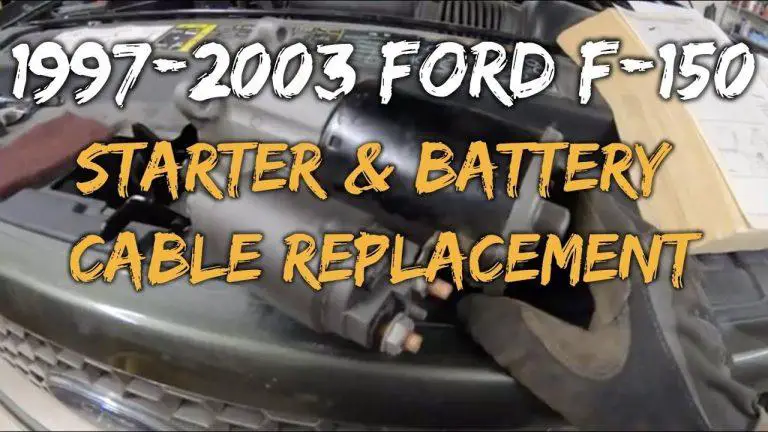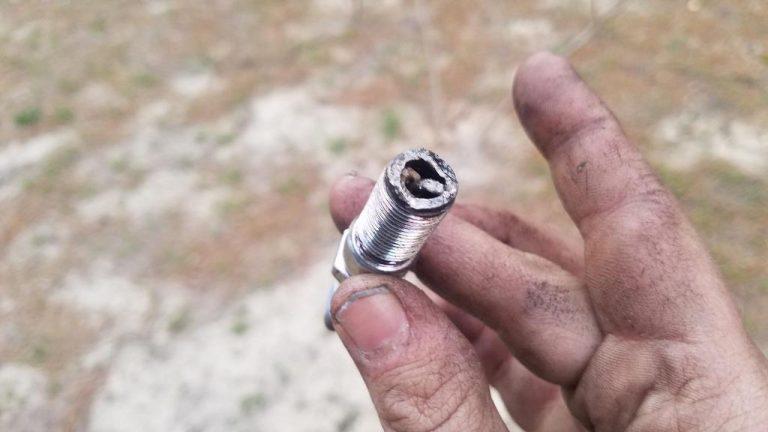How To Remove Rear Seat F150
Last Updated on by David Jon
As dedicated experts in automobile maintenance and repair, particularly with Ford vehicles, this article seeks to coach individuals like auto aficionados, aspiring mechanics, and everyday Ford owners in successfully executing a task that may initially appear intimidating – the removal of the rear seat in an F150. This comprehensive guide is specifically fashioned to be both informative and user-friendly, while maintaining an engaging, professional tone throughout. Our objective: to ensure that you, the reader, can confidently navigate this task while appreciating the mechanics involved.

Understanding the Structure of Rear Seat F150
As Ford owners, mechanics, DIY fans, or individuals interested in Ford maintenance, understanding the structure of rear seat F150 is basic yet crucial knowledge. The Ford F150 has an intelligently designed interior, and the rear seat is no exception. Having knowledge about the rear seat structure not only aids in maintaining this seat’s functionality and comfort over the long term but also allows for efficient troubleshooting and repair procedures when required.
About F150 Rear Seats
The rear seats of the F150 have been built with the highest regard for user comfort and safety. They are sturdy, customizable, and designed for easy access and adjustment. However, to maintain and repair these seats, having an understanding of their precise component makeup is necessary. This includes thorough knowledge about their brackets, latches, and other parts, as well as a comprehensive understanding of how these parts interact and work together.
Components of the Rear Seat
The F150’s rear seat primarily consists of the upper and lower parts. The upper part is also known as the seat back panel, while the lower part is the seat bottom. In addition to these, there are the brackets which keep the seat in place, the latches which enable the seat’s tilting feature, bolts and screws for maintaining the rigidity of the assembly, and the cushioning and fabric covers for comfort.
Types of Rear Seats
The design and type of rear seats in an F150 can vary depending on the model and year of manufacture. Common types include bench seats, 60-40 split seats, folding seats, among others. Despite some differences in design or feature, the basic structure and components mostly remain consistent across all types.
Precautionary Measures before Removing Rear Seat F150
Before beginning the process of removing the rear seat from an F150, it’s imperative to take certain precautions. These measures reduce the risk of harm to both the individual carrying out the work and to the vehicle’s interior.
Wearing safety gear
While removing the rear seat might not seem like a hazardous task, it is always better to be safe than sorry. Therefore, wearing gloves to protect your hands from sharp edges or screws and wearing safety glasses to protect your eyes from any flying debris should be the first step.
Checking for live circuits to avoid accidental shocks
Before commencing, always ensure the vehicle is turned off to prevent accidental electrical shocks. If the seat has any electrical equipment attached to it, such as seat heaters, it is crucial to disconnect the battery before starting any work.
Proper tools required for removal
Make sure to gather all necessary tools before starting the project. Not having the correct tools at hand can not only be time consuming but also lead to damage to the vehicle’s interior.
Tools Required for Removing Rear Seat F150
The removal of the F150 rear seat requires some basic tools. The tools used will often depend on the specific model of the vehicle, but there are some common ones that one should have at hand when starting this task.
Identification of tools required
The tools typically required for removing the rear seat include a socket wrench set, pliers, a torque wrench, and possibly a flat-head screwdriver. Depending on your vehicle’s specifics, you might also need different types of screwdrivers or special sockets.
Functionalities each tool provides
Each tool has a specific role in the seat removal process. The socket wrench is usually used to remove bolts that secure the seat in place. Pliers can come in handy when dealing with wired connections, like those found in electrically-adjustable seats. The flat-head screwdriver might be used to pry lose some components, and a torque wrench is most helpful during the reinstallation process, to ensure all bolts are properly tightened.
Safety Measures while handling the tools
It is always crucial to handle any tools with care to prevent any accidents. This involves using the right tool for the right job, keeping all tools in good working condition, and storing them safely when not in use.

Step by Step Guide on Removing Rear Seat F150
This process may vary slightly depending on the specific model and seat design, but the general procedure covers the following.
Lifting the seat bottom
Start by lifting the seat bottom. This might require releasing some latches and might be dependent on the particular design of the seat.
Removing the bolts
Removing the seat involves unscrewing the bolts that secure the seat frame to the vehicle floor. These are typically located at the seat’s base.
Removing the seat back panel
This requires unscrewing the bolts that secure the seat back to the brackets. After the bolts are out, the seat back should be free to lift out of the vehicle.
Removing the Lower Part of the Seat
In order to remove the lower part of the seat, there are some essential steps to follow.
Location of the Lower Part
The lower part of the seat, or the seat bottom, is located at the base of the rear seat and is directly attached to the floor of the vehicle.
Steps to remove the lower part of the seat
To remove the lower part of the seat, start by lifting it upward to expose the attaching points. Once visible, the next step is to remove the bolts that secure the lower seat to the vehicle floor.
Safe disposal of the parts
Once the seat is removed, it must be stored or disposed of safely. For those who intend to reinstall it, storing it in a dry, clean place would be optimal.
Removing the Upper Part of the Seat
The removal of the upper part of the seat, alternatively known as the seat back, involves a distinct set of steps.
Location of the Upper Part
The upper part of the rear seat is formed by the seat back, and it’s generally affixed to the car frame, right behind the lower seat part.
Steps to remove the upper part of the seat
The removal of the upper part involves releasing any latches that might be holding the seat back in place and then unscrewing the bolts that attach the seat back to the brackets. After the bolts are out, the seat back should be able to be lifted out of the vehicle.
Safe disposal of the parts
Similar to the lower part of the seat, the upper part must be stored in a clean, dry place if there’s any intention to reinstall it. Otherwise, it should be disposed of correctly.
Addressing Common Problems during Removal
During the removal of the rear seat F150, some common problems might arise. It is important to address these issues properly.
Common issues faced
Common issues include difficulty in releasing the latches, stripped or rusted bolts and screws, or having difficulty in lifting the seat components due to their weight.
Effective solutions
An effective solution for rusted bolts includes applying rust dissolver before attempting to unscrew them. For damaged screws, there are screw extractors available in the market. If you are having trouble with the weight, it’s advised to ask someone for help or use a suitable lifting tool.
Expert tips to avoid issues
Using the appropriate tools is always crucial. Using a tool that is too small or too large can cause damage to the screws and bolts. Lubrication of the bolts and screws before trying to unscrew them can help. Furthermore, taking photos of the setup before beginning the process can also help during reinstallation.
Reinstallation Process of Rear Seat F150
Once repairs or maintenance has been done, and if you choose to reinstall the seats, following the correct procedure is essential to ensure that the seats function properly and securely.
Bolting the seat back in position
Start with the seat back. Align it properly with the vehicle brackets and with the screw holes in the right position. Secure the seat back by tightening the bolts effectively.
Securing the upper and lower parts of the seat
Next, secure the lower part of the seat. Place it at the correct position and secure it using bolts. The bolts should go into the same holes that they were unscrewed from.
Ensuring proper alignment of the reinstalled seat
After the installation, check the alignment of the seat. Make sure that the seat is properly positioned, sturdy and does not wobble or shake when pressure is applied.
Maintenance Tips for Rear Seat F150
Regular maintenance can help prolong the life of the rear seat F150.
Cleaning and maintenance
Clean the seats regularly to prevent dirt and grime from building up. You might want to vacuum the seats or use fabric cleaners for cloth seats, and leather cleaner for leather seats.
Regular checks for optimum functionality
Do regular checks to ensure that the seats are secure and that the latches or levers are working correctly. Look for any visible damage or wear, and address it as soon as possible.
Finding affordable replacement parts
Shop around for replacement parts, either in physical auto stores or online. Make sure you’re getting the best price for the best quality, and make sure the part is compatible with your vehicle model.
Professional Help vs DIY Removal of Rear Seat F150
Weighing the pros and cons of professional help and DIY can be helpful in making decisions regarding the removal of the rear seat F150.
Comparison of costs
Professional help may be pricey, with labor costs adding up. Doing it yourself can save on these costs, although you might need to buy some tools if you don’t have them already.
Time effectiveness
Professionals may be able to complete the task quicker due to their experience and stery. DIY, especially if it’s your first time, may take longer.
Skill requirements
Some seats, especially those with electric components, require substantial mechanical knowledge. If you don’t have much experience, it might be safer to hire a professional.
Safety considerations
Safety is paramount during any vehicle alterations. If you are in doubt about any aspect of the seat removal or reinstallation, contact a professional to avoid any risk.
In conclusion, the task of removing and reinstalling the rear seat F150 can be quite straightforward if you understand the structure of the seat, have the right tools, and follow the correct steps. Nonetheless, remember that the process may vary slightly depending on the model. Always consider your safety and skill limitations when undertaking such tasks and seek professional help when necessary.


